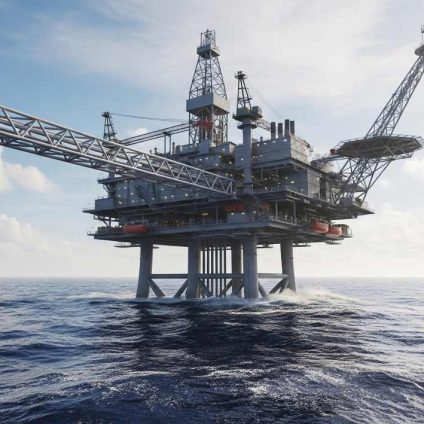Global oil demand is set to slow as electric vehicles rise and petrochemicals grow, marking a major shift in the energy market, the IEA reports

The global oil market is entering a new phase of uncertainty. Geopolitical tensions, highlighted by recent exchanges between Israel and Iran, have reignited concerns over global energy security, pushing oil prices to a four-year high. Yet beyond short-term price spikes, the new Oil 2025 report by the International Energy Agency (IEA) outlines a clear structural trend: global oil demand is headed for a long-term slowdown.
By 2030, global demand is expected to grow by just 2.5 million barrels per day (mb/d), while production capacity will exceed 114 mb/d. This growing imbalance signals the onset of a new era shaped by the energy transition, the rise of electric vehicles, and the expanding role of petrochemicals.
Asia drives global oil demand growth, but China slows down
Oil demand will continue to increase in emerging economies, rising by 4.2 mb/d by 2030, led by India (+1 mb/d) and Southeast Asia. In contrast, OECD countries will see a net decline of 1.7 mb/d. China, once the engine of global oil consumption, will post minimal growth (+30 kb/d), held back by the surge in electric vehicles, high-speed rail expansion, and the adoption of natural gas trucks. Once growing at 6% annually in 2010, China’s oil demand is now nearing its peak.
Oil as feedstock: the petrochemical sector takes the lead
Starting in 2026, petrochemicals will become the primary driver of global oil demand. According to the IEA, the sector will consume 18.4 mb/d by 2030, accounting for more than one-sixth of global production. This shift is fueled by the rapid increase in natural gas liquids (NGLs), especially ethane and LPG, used as feedstock in chemical manufacturing. China and the United States are leading the expansion, while Europe and parts of Asia are falling behind.
Electric vehicles represent the second major disruptor. In 2024, 17 million EVs were sold, with projections surpassing 20 million in 2025. By the end of the decade, EVs will replace 5.4 mb/d in oil demand, three-quarters of which is gasoline. Half of that reduction will come from China. Remote work is also playing a role: in 2024 alone, teleworking avoided the use of 800,000 barrels per day in transportation, primarily in the United States.
Supply outpaces demand growth
While global oil demand begins to plateau, supply continues to rise. By 2030, global production capacity will reach 114.7 mb/d, up 5.1 mb/d from 2024. The growth will be driven by NGLs (+2.3 mb/d), biofuels (+680 kb/d), and to a lesser extent, crude oil (+1.8 mb/d). The top contributors are expected to be the United States, Saudi Arabia, the United Arab Emirates, and Iraq. Without coordinated production cuts, this imbalance could trigger a structural surplus and usher in a new period of low prices.
Refined product demand is forecast to peak in 2027 at 86.3 mb/d, only 710,000 barrels above 2024 levels. After that, gasoline and diesel use will fall more than the gains in naphtha and jet fuel. Still, refining capacity is expected to expand by 2.6 mb/d through 2030. Most new refineries will be built in Asia, while high-cost facilities in Europe and on the U.S. West Coast will be the first to shut down.
A shifting balance in global oil demand
The IEA sees the global oil market moving toward an unstable equilibrium: oversupply, global oil demand nearing its plateau, and escalating geopolitical risks. The surplus could reach 1.7 mb/d by 2030. But the true transformation is structural. Oil is evolving from an energy source into a feedstock for petrochemicals, while electric mobility and energy decarbonization narrow the space for demand growth.
You can download the full report at this link.












